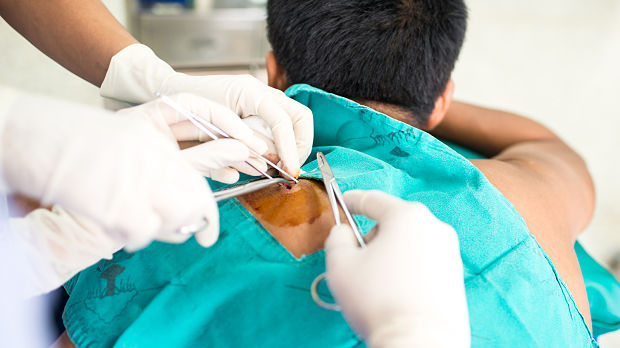
Pyoderma Gangrenosum: Does Surgery Increase Risk of Recurrence?
There have been studies that show that pyoderma gangrenosum (PG) may flare up for the first time after a surgical procedure. However, there has been little research on whether the same postoperative risk exists for patients that have a diagnosed history of PG. Knowing the risk may help providers prepare for such an outcome with either prophylactic medications or altered timing of procedures, or even the choice of procedure type.
A recent study evaluated the risk for recurrence or exacerbation of PG after different types of surgical procedures in patients with a known history of PG. The retrospective study looked at the records of over 150 patients with PG with a collective total of 601 procedures that included: (1) skin biopsies; (2) laparoscopies, arthroscopies, core needle biopsies, and epidural injections; (3) small open surgical procedures; (4) large open surgical procedures; and (5) Mohs micrographic surgery.
Postoperative recurrence or exacerbation occurred in 33 cases; the rate of exacerbation or recurrence was significantly associated with procedure type and having PG chronically present at time of the procedure. Based on these data, more invasive procedures such as small and large open surgical procedures, or Mohs micrographic surgery were more likely to be associated with PG recurrence.
The authors conclude that this study shows a small but clinically meaningful risk for postsurgical recurrence or exacerbation of PG in patients with a known history. They note that their findings should be followed by a larger scale study to identify whether the factors identified in the study can be modified to decrease the risk to patients with PG at the time of surgery.
Byline: Martha L. Sikes, MS, RPh, PA-C
Posted: February 18, 2018
Source: JAAD
Adapted from the original article.
[Image: Chanpen Supagoson / Shutterstock]







